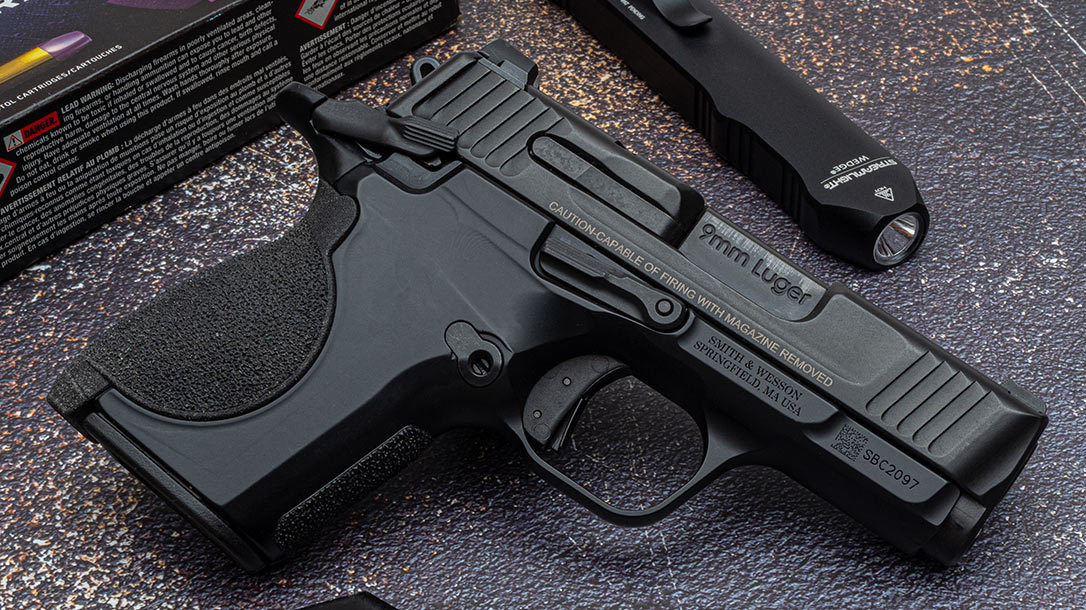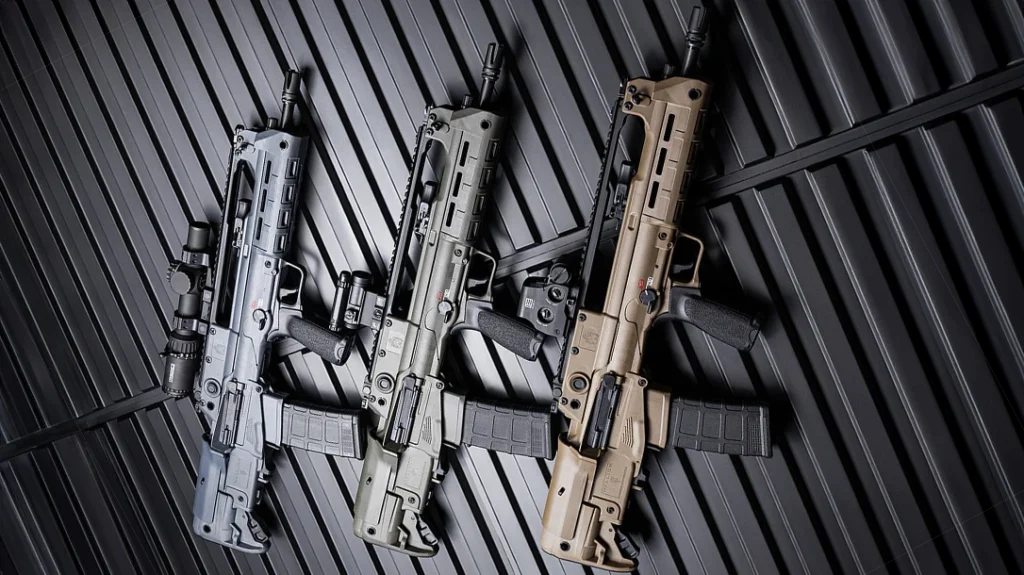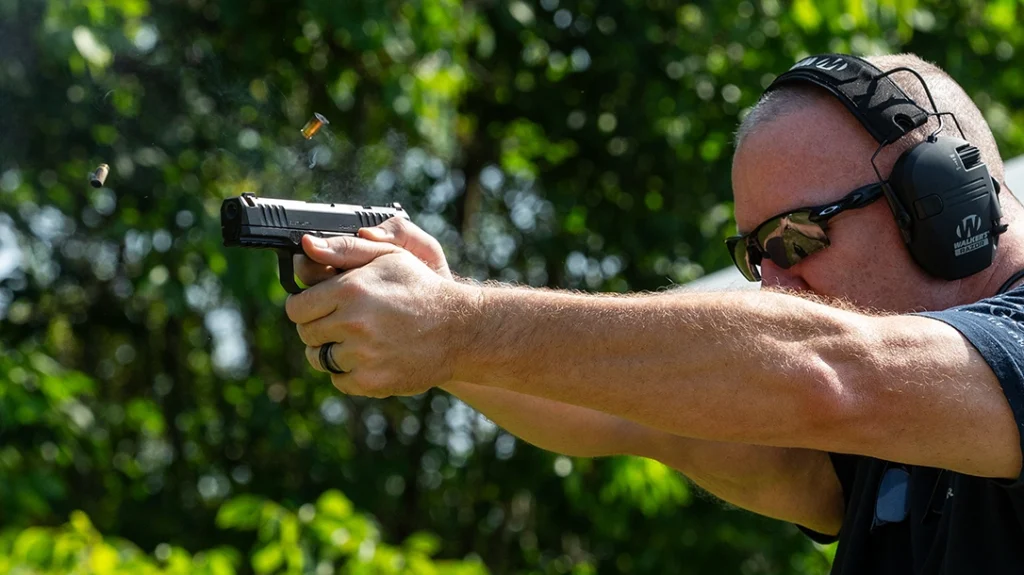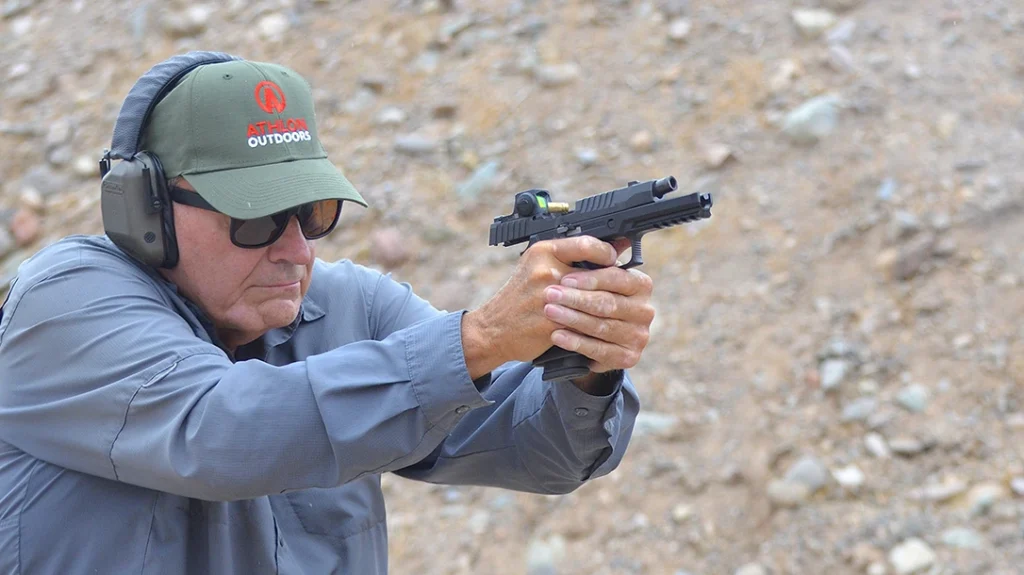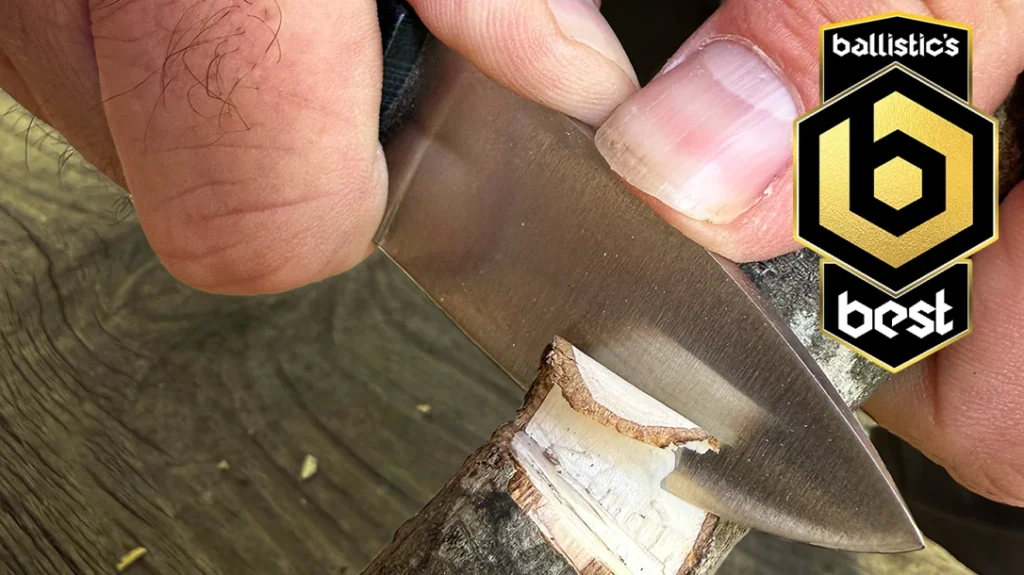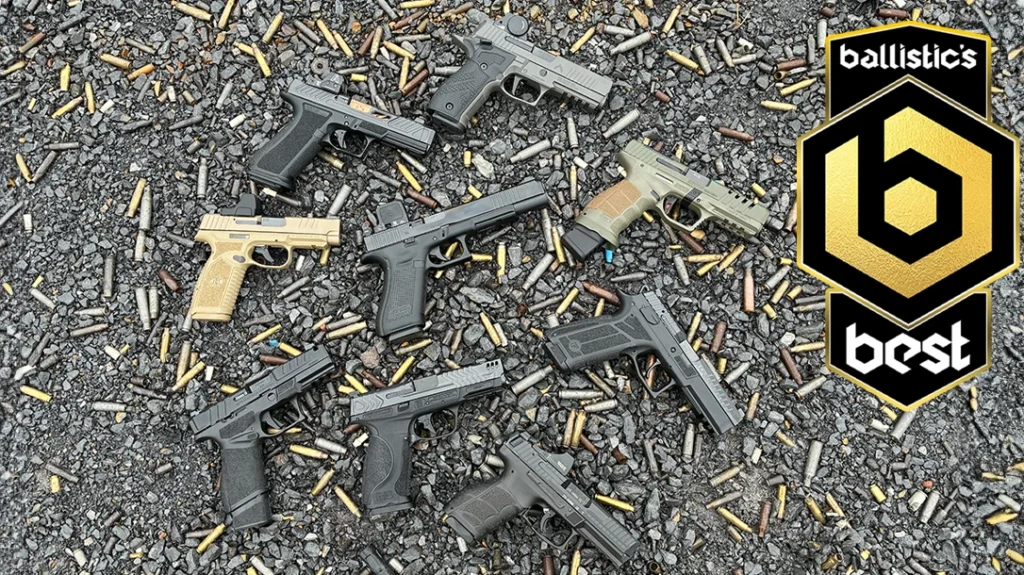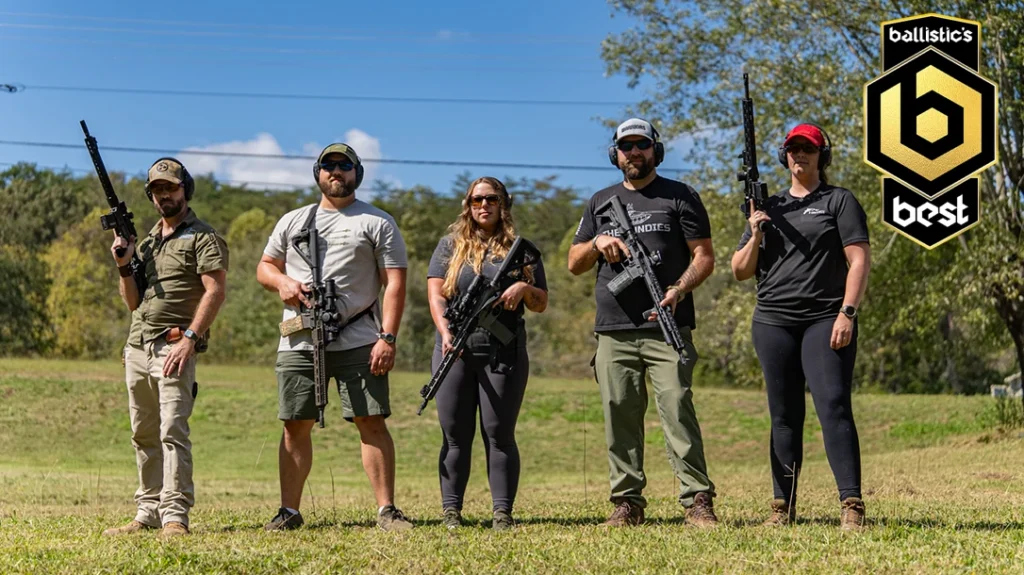There’s little that warms the cockles of my heart as much as a pistol with an honest-to-God metal frame. I’m a member of Generation X. So, polymer-framed pistols were just hitting the market when I became old enough to buy a handgun. I made the transition easily enough. However, I grew up with pistols like Smith & Wesson’s 4506, 6906, 5906, and 3913. I still get a little misty-eyed when I reminisce on the good old days. So, I love it when companies like Smith & Wesson come out with metal frame pistols like the micro-compact CSX.
The Smith & Wesson Micro-Compact CSX
It’s now 2022, and other than 1911s and competition pistols, very few metal-framed pistols are being introduced these days for general use or concealed carry. However, the folks at S&W recently decided to revive the past just a bit and throw us a bone.
The company married the very popular micro-compact concept with an aluminum frame. Doing so, they’ve introduced a fantastic little carry pistol, and it’s called the CSX.
Advertisement — Continue Reading Below
The new CSX micro-compact from Smith & Wesson bears a bit of the same styling as the Shield Plus. While it doesn’t look exactly the same, you can definitely see the family resemblance. I can’t help but think the “CSX” moniker hearkens back to the company’s .38 Chief’s Special. It was the O.G. “micro-compact” of its times.

The CSX falls into the micro-compact category itself. However, there are a couple of distinct differences that separate the CSX from all the other micro-compacts on the market.
Advertisement — Continue Reading Below
The first is the aluminum frame, and the second difference is that the CSX utilizes a hammer rather than a striker. That’s right, a hammer. We’re definitely going old-school with this one.
Rather than using a striker-fired operating system, the Smith & Wesson CSX is a single-action-only (SAO) pistol. This means that the hammer must be cocked first before the pistol can be fired—similar to a 1911.
Naturally, we don’t want to be fumbling around with the hammer in a defensive encounter. So, the CSX comes with a 1911-style thumb safety that allows the pistol to be carried cocked and locked. During the pistol’s presentation, the thumb safety can be wiped off safe and it’s ready to rock and roll.
Advertisement — Continue Reading Below
Big Features—Small Package
For such a diminutive pistol, the CSX packs in a lot of features for its size. Not to mention its generous magazine capacity. The CSX comes with a 12-round and 10-round magazine, with the 12-rounder having a slightly extended baseplate.
While a shorter grip will always be more concealable, the extended baseplate adds only around an eighth of an inch in height. I would gladly trade away height for two extra rounds. As a side note, it’s also worth pointing out that, thankfully, there is no magazine disconnect safety. So, the pistol will fire without a magazine in place.
The CSX’s modern design offers ambidextrous controls for the manual thumb safety and the slide stop/release. Additionally, an extra magazine release for left-handed shooters is supplied for an easy install, so southpaws can rejoice. Another part of its modern design is the fact that the CSX, despite its aluminum frame, offers two backstraps to tailor the fit to the individual shooter.
Advertisement — Continue Reading Below

The company supplies a small tool that can be used to depress the backstrap lock, so the backstrap can be removed and switched out for the other. This is a solid concept and definitely changes the size of the grip. But it does have a drawback or two.
First, if you put the smaller backstrap on the CSX, that leaves no texturing on the sides of the grip. It’s just a smooth piece of aluminum. The second drawback is the appearance.
Advertisement — Continue Reading Below
There’s a semi-circular area exposed where the larger backstrap slides in for the fit. With that area exposed, part of the grip sides is not flush with the other parts. It’s not exactly an attractive aesthetic, and you can feel the difference between the two areas. But it doesn’t appreciably affect the CSX’s shootability.

Other Amenities
The CSX offers a sleek slide that sports Smith’s Armornite finish along with top serrations to help mitigate glare. There are fore and aft cocking serrations as well to assist with fumble-free slide manipulation. And yes, the front serrations are bold, substantial, and in your face. They aren’t the tiny and kludgy indentations found on earlier M&P slides.
Advertisement — Continue Reading Below

Another nice thing about the slide is that most of the edges and corners have been radiused a bit for a smooth and rounded feel akin to a bar of soap. Along that line, the ejection port has been chamfered as well for a cleaner look. It also prevents any kind of snagging during the draw. Additionally, the company has integrated a set of EZ-tabs at the rear of the slide for easier racking.
Finally, the slide wears a set of white, three-dot sights. These are serviceable enough for daylight use but I’d really like to see an upgraded option such as night sights or a high-contrast set. However, I think the three-dot sights were introduced first to keep the CSX’s MSRP at the extremely reasonable price point of $609.
Advertisement — Continue Reading Below

The CSX’s Unusual Trigger
The last piece of the CSX puzzle is the trigger, and it’s a little unusual, to say the least. Despite the SAO operating system and the manual thumb safety, the trigger sports an integrated safety as well. It is similar to modern striker-fired pistols. The pull is a bit heavier than you would expect for a SAO system, too. The pull measures 4.8 pounds at the break on my Lyman digital gauge.
You also don’t really feel the break in the trigger, either. The trigger doesn’t have the light, crisp break you would experience with…say, a 1911. There’s no tactile click you can feel. The only way you know the break has occurred is that the hammer flies forward, and the round has fired. It’s not a bad trigger pull. It’s just different.
Advertisement — Continue Reading Below

To The Range
One thing that’s always nagged at me about going to the range and practicing with range ammo is the difference between where the range loads hit on the target versus the defensive loads I carry.
That’s of particular concern with a red-dot optic that can facilitate pinpoint precision. It’s nice to be able to use the same hold with your practice ammo that you do with the carry stuff. It just allows for a smoother and more consistent training session.
Federal Premium has recently introduced a line of ammunition that’s expressly built for just that purpose. It’s the company’s new Syntech Training Match ammunition. Right now, it’s available in 9mm in the 124-grain and 147-grain weights. Each load is built to match the same velocity, trajectory, and point-of-impact as the equivalent-weight HST load.
Built on the back of Federal’s Syntech line, the training match loads have a synthetic purple jacket to separate them from other range loads. Additionally, the synthetic jacket helps to reduce friction, barrel heat, and it helps prevent metal fouling. The training match rounds feature Federal’s high-performance and lead-free Catalyst primer for absolutely reliable ignition.

Federal’s HST line is one of my favorites for everyday carry. So, I reached out to the folks there to see if I could try the new Syntech Training Match rounds. They were very accommodating and sent out a good supply. I took part of it to the range to try out the new Smith & Wesson CSX.
An Acquired Taste
With a few of my shooting buddies on hand, the CSX got quite the workout. For the most part, its performance was everything I thought it would be, from its reliability to its excellent accuracy, but with a few caveats.
The trigger definitely took some getting used to, particularly when trying to do quick follow-up shots. Part of that was due to the heavier pull as well as a slightly hinky trigger reset. After firing a shot, the trigger moves forward, and there is a slight click that one assumes is the reset. However, the trigger keeps going forward and there’s a more prominent click that is the actual reset.

That little click-and-a-half reset was a little disquieting in the beginning. It took a bit of practice with the CSX to get used to the trigger mechanics and to develop a real rhythm that resulted in quick and on-point follow-up hits. The 18-degree grip angle helped in that regard, resulting in the pistol pointing very naturally.
The other quirk that reared its head was due mainly to its size and beavertail design. Out of the five of us putting rounds through the CSX, two of us with beefier hands experienced slide bite.
When choking up on the grip for a high hold, just enough of our hands protruded above the beavertail to get dinged by the slide. I’ve got a nice little scar healing up as I write this article. Before picking up a CSX yourself, it’s worth checking out how it fits in your hand and cycling the slide a few times to see if it might take a bite out of you as well.
Superb Performance from the S&W CSX
Aside from those idiosyncrasies, the actual performance of the CSX was quite superb. Everything from round-nose ball to TSJ loads to hollowpoints fed flawlessly, and nary a hiccup occurred. The accuracy was just as good as the reliability, if not better. We had three loads from Federal and one from Hornady, all printing right at an inch or less when shot from the bench at 7 yards.
While Federal sent out the new 124-grain Syntech Training Match ammo, they only had +P HST defensive ammo to send out with it. So, the point of impact didn’t match up perfectly, but it was close enough for government work.
The HST +P ran 1,087 feet per second, and the Syntech Training Match load was fairly close in velocity at 1,064 feet per second. Once I get some standard-pressure HST in-house, I’ll be able to suss out the POI results more accurately.

I had some of my own 124-grain Hydra-Shoks on hand that I tried out. Its point of impact matched up fairly well on target with the new Syntech loads. That is despite running about 100 feet per second slower than the Syntech round.
Of course, that was only at 10 yards, and the farther out you get, the more difference there will be with POIs. In fact, the standard Hydra-Shoks turned in the best group of the day. It achieved a group of 0.81 inches with an average group size of .94 inches.
Despite its small size and relatively lightweight, the CSX was easy to shoot well, even at distance. Recoil with standard-pressure loads was handily managed. Even with its short sight radius, we were making quick and consistent offhand hits on 8-inch plates at 30 yards. When it comes to what matters most on the firing line, the CSX definitely delivered the goods.
The Right Choice
With its high capacity, micro-compact form factor, superb build quality, and outstanding performance, the new CSX is a first-rate addition to Smith & Wesson’s lineup. It’s an especially nice addition considering that it integrates an aluminum frame and yet its MSRP is still only a hair over $600. It’s almost certain that the street price will be well under that mark.
I was very excited when I first heard about the CSX and saw the spec sheet. I really wanted to like it, and I absolutely do like it—a lot. It’s very reliable, exceptionally accurate, and packs a hefty payload for its size.
For more information, please visit Smith-Wesson.com.
Smith & Wesson CSX Specs
Caliber: 9mm
Barrel: 3.1 inches
Overall Length: 6.1 inches
Width: 1.12 inches
Weight: 19.5 ounces
Grips: Polymer
Sights: Three-dot, white
Action: Single-action, semi-auto
Finish: Armornite, black
Capacity: 10+1,12+1
MSRP: $609
This article was originally published in the Combat Handguns May/June 2022 issue. Subscription is available in print and digital editions at OutdoorGroupStore.com. Or call 1-800-284-5668, or email subscriptions@athlonmediagroup.com.
